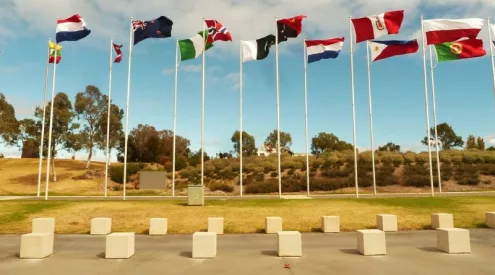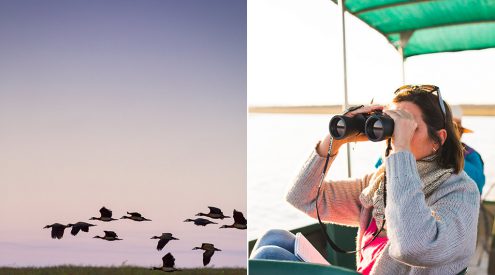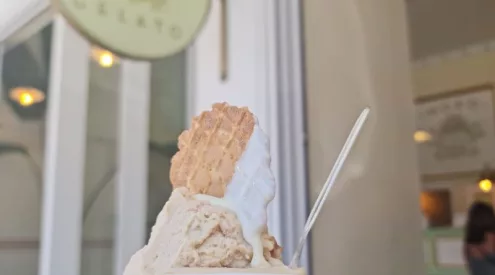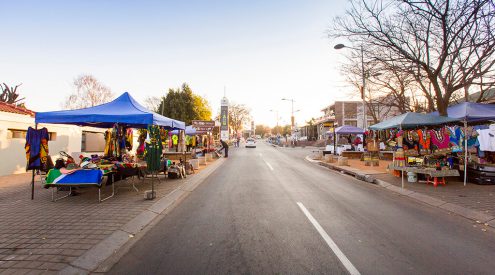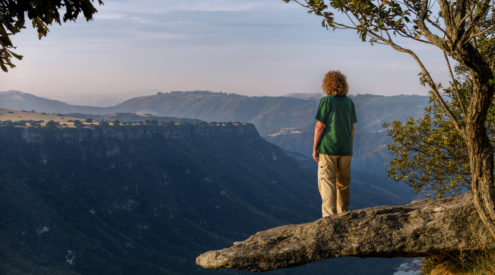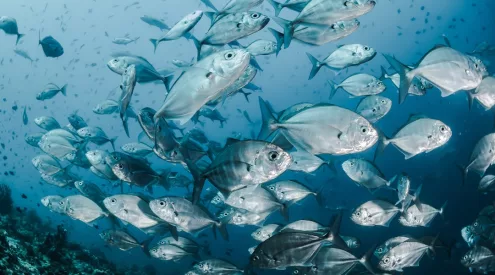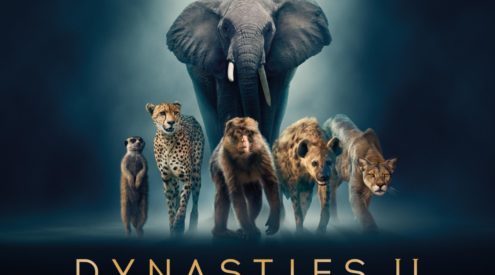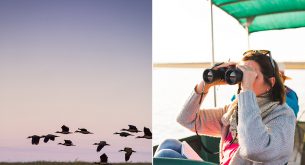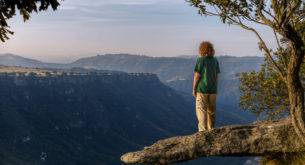One of my most vivid memories as a little boy, besides playing with He-Man, was standing in front of a wall of photos at Ingwelala Private Game Reserve in the Umbabat, adjacent to the Timbavati Private Nature Reserve, and seeing pictures of white lions feeding on a giraffe. It was almost unfathomable that these magical animals had been in our reserve once upon a time. From that day onwards, it became my dream to see one of these anomalies in the wild.
It wasn’t an unreasonable dream until the last of these naturally occurring lions from the “White Pride” died in the early 1990s. My dream slowly faded, so did He-Man, and life in the bush went on with just your everyday, normal, tawny lions. How boring.
Fast forward to May 2006, and suddenly my dream was revived with an email I received saying that two white lions had been born on Ingwelala to the resident Jacaranda Pride, and even better news, I was heading in that direction two weeks later. It was understandably disappointing when I arrived for a few days in the reserve and couldn’t find any sign of the pride, let alone the cubs. As it would turn out, nobody ever saw any sign of those two little bundles of white fur again, such are the tough challenges that they face.
Within 5 months, a pride further south in the Timbavati gave birth to their own white cub, but just was with the Jacaranda Pride, it died at a very young age. At this rate, my dream was going to remain just that; a dream.
In the meantime, I embarked on another dream, and started my career as a game ranger in the Timbavati, and got pretty good at telling my guests about white lions, and how we are always hopeful that one day they would return. This was all well and good, but I really wanted to see one myself, just to confirm that the photos I initially saw weren’t Photoshopped or just badly overexposed!
One of the lionesses that often elicited the discussion on white lions was a lioness that herself was born into the Jacaranda Pride in 2004. As it was her mother that gave birth to the white lion cubs in 2006, we realised that there was a very good chance that she carried the recessive gene herself, and this was brought to fruition in early 2009 when she gave birth to two white lion cubs in the Umbabat, adjacent to the Timbavati. This was wonderful news, and as this pride’s territory fell partially within our reserve, we were always hopeful that one day they would pop up and fulfil my dream (the white lion dream, not the He-Man one).
As time went by, and we saw no sign of this pride or their white lions, my dream of ticking off the White Lions of the Timbavati from my wish list was starting to fade, especially as my stint as a game ranger was coming to an end. I wasn’t the only one giving up on these white lions though; a wildlife cinematographer, Leanne, that had been trying to follow and film these rare wonders of nature was also packing it in, as seeing them once every six weeks was not going to make for a very good documentary; and besides, they had disappeared.
It was the 2nd of December 2009, I was heading back to Johannesburg for the weekend – my last break before leaving the bush for good two weeks later – and I had finished packing my cameras and bags into my car, and along with Leanne who was now leaving the Timbavati for good, we were just about ready to go when I got a rather strange message. Despite being in English, it almost sounded like someone said “Chad, there are white lions on the property”. I went to radio a colleague, who was out on drive, and he confirmed that I wasn’t hearing things; there was a pride of lions with two white cubs on a giraffe kill in the south.
Johannesburg could wait, and within minutes I was heading down the road to see this for myself. Even an ostrich running along the road, only the third one I had seen in three years, was not enough to slow me down as I made my way towards the sighting; I was like a little child!
Eventually I pulled in and saw the massive adult lionesses feeding on the kill, but they weren’t the reason I had come all this way, so I edged around a bush to see what I had been waiting almost 20 years to see, and there they were…muddied, bloodied white lions that didn’t even look white! What? They were supposed to look like polar bears! To say I was disappointed would be an understatement. This wasn’t how they had looked in my dreams. How was I going to get an award winning photo of the dirty, Off-White Lions of the Timbavati?
I didn’t stay long, as I still had a long trip back to Johannesburg, but drove back to the lodge feeling somewhat aggrieved by this. Surely I should feel on top of the world having just seen what was, at that point, the only known wild white lions in the world? But they were dirty! Don’t get me wrong, they were clearly different from their two tawny cousins, but they just were not very white…heck, even I was more pale than them!
A few days in Johannesburg made me miss the bush, and wonder about these Off-White Lions, so much so that I actually cut my leave short to return to the reserve in the hope of seeing them again, but they had finished their kill and moved off. Who were they, where did they come from, and would they come back?
On one particularly quiet evening drive, that last question was answered when one of the lodge’s staff members radioed to tell me that he had bumped into some lions near our one private camp…and they were white. I wanted to correct him, and tell him that they were “off-white”, but I refrained and concentrated on getting their as quickly as I could. As I pulled up to the sighting, I suddenly realised why they were called white lions; they had cleaned up well, and now they really were white!
In the fading light of day, their pigment-lacking coats (leucism, not albinism – but that is as technical as I will get in this article!) really stood out, and while the tawny lions blended effortlessly into the greying world, the white coats stuck out like a person dressed as He-Man in a crowded shopping mall. It was thus very interesting to see how the cubs (8-months old then) went and hid behind a termite mound as the two pride lionesses went to hunt, and successfully caught a warthog. The white and tawny cubs ran over and began feeding even before the poor hog was dead, but in fighting for each mouthful, showed that they were just as strong as their normal coloured counterparts. The only problem now was their blood-covered faces made them look more like the Pink Lions of the Timbavati more than anything else!
I reluctantly left the Timbavati to return to studies in Johannesburg, just at a time when this mysterious white pride seemed to be settling down as a new resident pride. Slowly too, the pieces of the puzzle started falling into place, and we realised that our mystery white lions weren’t actually that mysterious; they were the same descendents from the Jacaranda Pride that were born in the Umbabat. With that news, Leanne moved back to the reserve to resume filming, and as 2010 moved on, the pride established themselves in the area and even without having a pride male, the two large lionesses managed to keep the cubs safe, and seeing them on my monthly visits was quite special (although I did find that they slept even more than normal lions!!!).
Towards the end of 2010, the pride encountered a few troubles – they were being chased out of the area on a regular basis by a coalition of young male lions, and then tragically one of the young tawny male cubs died a mysterious death at a waterhole, just the day after I captured my dream photo of a white and a tawny lion drinking next to one another; a real shock, but if you had to pick one lion to go, it would have been him. With that one photo, I suddenly changed my mind about just how special these lions were!
With studying done, I returned to the Timbavati at the end of 2010, and was happy to see that the pride was still hanging around. Unfortunately though, this didn’t last long, and in February 2011, they were seemingly chased out of the area for good.
That was my attempt at shortening a long story to bring you to this point; last week, on the 7th of June, we found tracks for a pride of lions, and we just knew what was going to be waiting at the end of the trail. Eventually, after a morning’s worth of tracking, we found them – the White Lions had returned to our reserve for the first time in four months! It was a joyous occasion for all of us, and particularly pleasing to see how much they had grown since we last saw them. They were no longer cubs; they were now lionesses in their own right.
That afternoon we spent some wonderful time with them watching them resting, interacting (their playfulness still evident), and then going off on the hunt – the young Whites no longer just trailing behind, but becoming integral parts of the team. It was once again amazing to see just how easily they stick out in the dark, and we were all left the sighting wondering about just how well they would be able to hunt as they got older? I guess when we found them with a zebra kill the next day, they answered that question for us!
The pride moved out of the reserve a few days later, but they left of their own accord, as opposed to being chased off by any other lions, so we remain confident that it will not be another four months until they return for a visit. Until then, we shall just have to get used to our normal coloured lions once again!
Follow the progress of the white lions at www.motswariblog.blogspot.com

